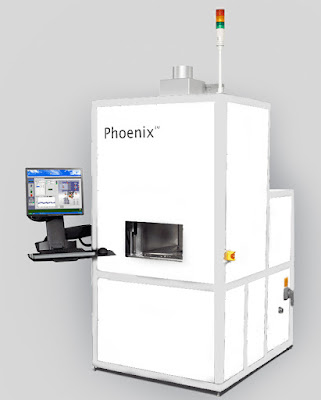For those of you interested in ALD reactor simulations and especially the classic cross flow design you should definitely check out this publication. University of Wisconsin-Milwaukee, University of Alaska Anchorage and Macquarie University, Sydney.
Investigating atomic layer deposition characteristics in multi-outlet viscous flow reactors through reactor scale simulations
Mohammad Reza Shaeri,Tien-Chien Jen, Chris Yingchun Yuan, Masud Behnia
International Journal of Heat and Mass Transfer, Volume 89, October 2015, Pages 468–481
Available online 6 June 2015
The Atomic Layer Deposition system at the Laboratory for Sustainable and Nano-Manufacturing in Milwaukee was required in October 2009 from Cambridge Nanotech Inc. (Today Ultratech / Cambrideg Nanotech). The Model is a Savannah S100 with capabilities for 100 mm wafers up to 10 wafer batch processing in a single deposition (https://pantherfile.uwm.edu/cyuan/Facilities.html). Either this is actually a picture from 2009 when the tool was new or these guys take really good care of their equipment as indicated that the protective shipping foil is still on.
Abstract
In order to minimize the operational time of atomic layer deposition (ALD) process, flow transports and film depositions are investigated in multi-outlet viscous flow reactors through reactor scale simulations. The simulation process is performed on depositions of Al2O3 films using trimethylaluminum and ozone as the precursors, and inert argon as the purge gas. The chemistry mechanism used includes both gas-phase and surface reactions. Simulations are performed at a fixed operating pressure of 10 Torr (1330 Pa) and at two substrate temperatures of 250 °C and 300 °C, respectively. Flows inside the reactors are following the continuum approach; as a result, the Navier–Stokes, energy and species transport equations can be used to simulate transient, laminar and multi-component reacting flows. Based on the chemistry mechanism adopted in this study, the amount of oxygen atoms produced from the ozone decomposition is found to be the major reason for discrepancies in oxidation times and deposition rates at different ALD processes. A reactor with fewer outlets minimizes the ALD operational times by reducing both oxidation time and second purge time. In addition, higher deposition rates at a shorter time are obtained by using a reactor with fewer outlets. However, assigning a long enough time for the ozone exposure results in independency of ALD characteristics from the number of outlets such that the growth rates of around 3.78 angstrom/cycle and 4.52 angstrom/cycle are obtained for the substrate temperatures of  and
and  , respectively.
, respectively.
At Lund Nano Lab in Sweden we also operate a Savannah from about the same time and it is one of the more popular tools judging by the frequent user bookings. Since Ultratech came in the picture some things have happened. Today you get a slim white design Generation 2 and the delivery time in Europe can be as fast as 8 weeks which is pretty fast if you ask me. Check out the new product page at Cambridge Nanotech here.
The Savannah is available in three configurations: S100, S200, and S300 and is capable of holding substrates of different sizes (up to 300mm for the S300).



%20(1).png)



